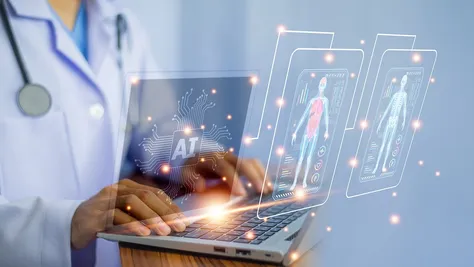The Chamber of Deputies has approved a draft amendment to the Healthcare Services Act promising a major shift in the Czech healthcare sector digitisation. Telemedicine - a modern way of providing healthcare remotely using digital technologies - will finally be legislatively implemented. How will this legislative change affect the digital era of the healthcare sector and what can healthcare service providers prepare for?
Digitisation amendment to the healthcare services act
Telemedicine - the provision of healthcare services remotely via information technology without physical contact between the patient and the doctor - is becoming more and more widespread in practice. The amendment to the Healthcare Services Act, which enshrines the definition of telemedicine and other parameters of its provision, is now heading from the Chamber of Deputies to the Senate. After a long debate about whether telemedicine healthcare services can be legally provided at all, healthcare service providers may finally see greater legal certainty. We wrote about the shortcomings of the current legislation and the forthcoming amendment last year (HERE). What is the final form of the amendment and what is the most important thing it will bring about? Here is a summary of the most important changes.
Enshrining the definition of telemedicine
The amendment defines telemedicine healthcare services as healthcare services that are provided remotely using telecommunications and information technology. Telemedicine has not yet been defined in the Act itself, which causes several uncertainties for healthcare service providers - whether it is a question of what telemedicine healthcare services may still be provided under the current "lege artis" legislation, or how the patient should grant consent to the provision of healthcare services. Telemedicine can now be classified under the category of consulting services that may be provided remotely, as allowed in the Healthcare Services Act. However, telemedicine services can have much wider applications. An example is telemonitoring - monitoring the patient's health condition remotely, evaluating the data and sending it to the healthcare service provider. More specific legal regulation is thus an important step towards facilitating the use of modern technologies in the healthcare sector.
Conditions for the provision of telemedicine services
The amendment only lays down very general conditions for the provision of telemedicine services; in particular, the requirements for security and quality of communication must be met. Even after the amendment comes into force, telemedicine services may only be provided by healthcare service providers. According to the explanatory memorandum, a healthcare service provider will not be able to obtain a licence only for the provision of telemedicine services, meaning that the amendment will not change the conditions for obtaining a licence to provide healthcare services (including the requirements for minimum technical services and human resources that each healthcare service provider must meet).
It also specifies which telemedicine services may be provided outside the healthcare facility if they are provided without the patient's presence - e.g. reading radiological images remotely (the wording is not entirely clear, but a logical interpretation suggests that in these cases the provider may also be outside the healthcare facility).
More detailed requirements are to be laid down in implementing regulations currently being prepared by the Ministry of Health. These are to specify, for example, how to identify a patient remotely, technical requirements for communication devices, and conditions for registering the patient's consent to the recording of communication.
Electronic medical documentation
The conditions for keeping electronic medical documentation are also to be simplified and streamlined - the current legislation allows for keeping documentation electronically, but in practice it still favours its paper form. The legislation imposes unclear requirements for keeping electronic documentation that are difficult for providers to meet - therefore, many of them keep documentation impractically in both forms (we have discussed this in our article HERE).
The amendment introduces a specific definition of medical documentation, which is currently missing in the Act - this may cause uncertainty, which documents still fall under it. The amendment defines medical documentation according to the purpose of its processing - as a set of information maintained, processed and stored by a healthcare service provider for the purpose of providing healthcare services to a specific patient, regardless of how it was collected and in what form. The new negative definition of which documents are not included in medical documentation is also crucial. Information that is not processed for the purpose of providing healthcare services to the patient will not be considered medical documentation. This can be, for example, orders, documents processed for insurance companies or support documents for litigation matters. These documents will then be subject to looser rules for their keeping and thus their digitisation, as it will not be necessary to comply with the legal requirements for keeping medical documentation.
Other key changes include:
- Requirements for authorisation of records in electronic medical documentation and for record identifiers in a specified format.
- Establishment of a single output format into which records from electronic medical documentation can always be converted - this should facilitate the sharing of documentation between healthcare service providers.
- The possibility for a healthcare service provider to process anonymised data from medical documentation for scientific and research purposes or for statistical purposes - anonymised data will not then be considered medical documentation.
Among other things, the amendment should be one of the steps to prepare the technical conditions for future health data sharing under the pending EU Regulation on the European Health Data Space (EHDS) More precise parameters, such as the method of signing or the time limits for making electronic records, are to be laid down in implementing regulations.
Since when will the changes take effect?
If the amendment is approved by the Senate, it should take effect this autumn. Despite several uncertainties that remain in the legislation, the amendment is an important step towards the healthcare sector digitisation. The legal regulation could thus at least partially catch up with the practice of healthcare service providers, who are increasingly using modern technologies.








